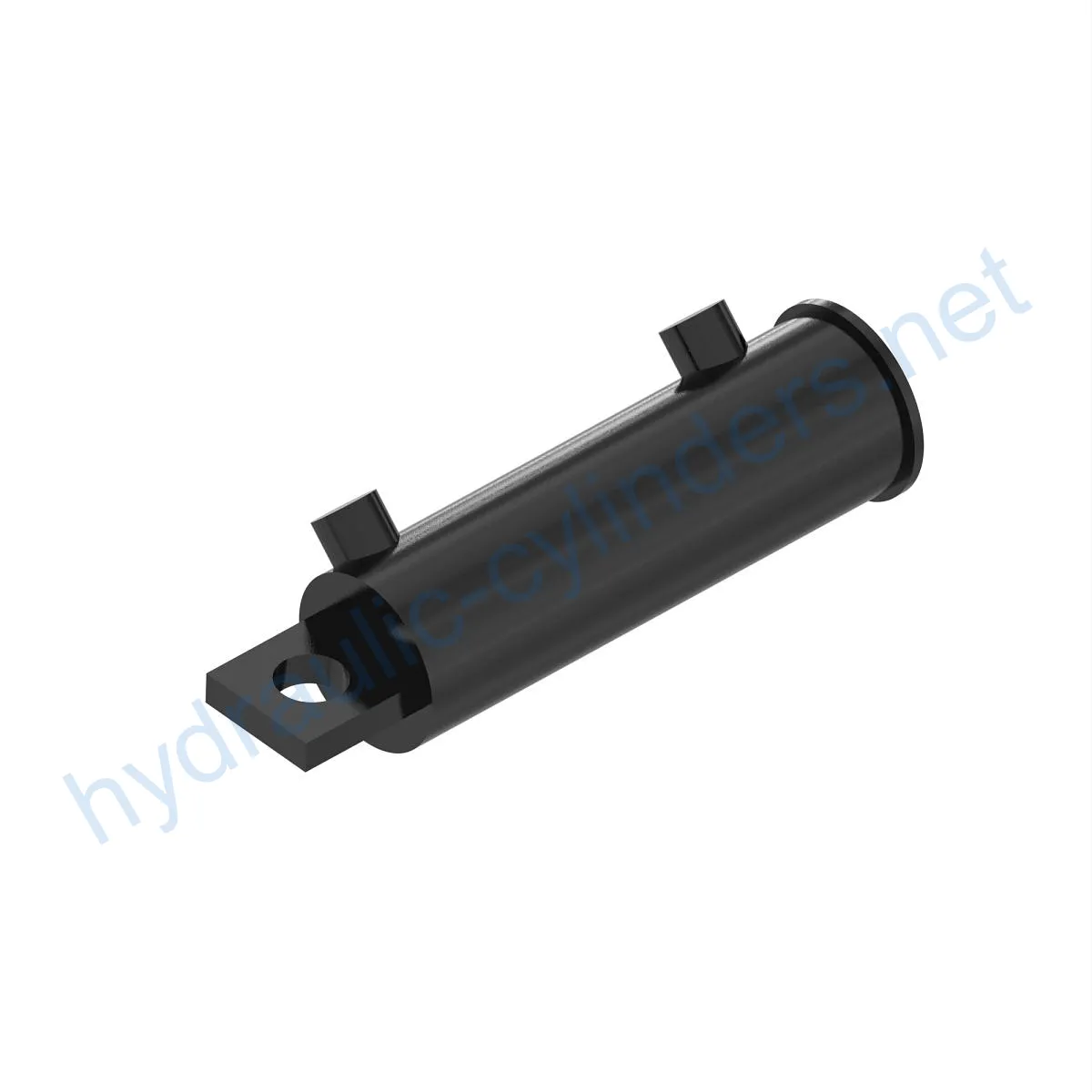Replacement Of TCA12874 Cylinder
As one of the hydraulic cylinders manufacturers, suppliers, and exporters of mechanical products, We offer hydraulic cylinders and many other products.
Please get in touch with us for details.
Mail:sales@hydraulic-cylinders.net
Manufacturer supplier exporter of hydraulic cylinders.
Replacement Of TCA12874 Cylinder
Introduction
The Replacement Of TCA12874 Cylinder is a hydraulic cylinder used for various applications. It is designed to replace the damaged or worn-out hydraulic cylinders in equipment, ensuring their optimal performance.
Specifications
- Weight: 3.32 lb
- Height: 2.1 in
- Width: 2.7 in
- Length: 10.5 in
Models
- 60 60 IN.
- 1550
- 1570
- 1580
- 1585
Features
- Improved Equipment Performance: Replacing damaged or worn-out hydraulic cylinders can restore the equipment’s normal operational capabilities, ensuring optimal performance in various applications.
- Enhanced Safety: Regularly replacing hydraulic cylinders reduces safety hazards caused by cylinder failures, ensuring the safety of operators and equipment.
- Overload Protection: New cylinder designs often incorporate better overload protection mechanisms, enhancing safety.
- Quick Installation: Modern hydraulic cylinders are designed for easy installation and replacement, minimizing downtime.
- Standardized Components: Many hydraulic cylinders are standardized products, making it easier to obtain replacement parts in the market.
Applications
- Excavators: Hydraulic cylinders in excavator arms or buckets may get damaged due to prolonged use or overload, requiring replacement to restore normal operations.
- Cranes: Hydraulic cylinders in crane boom arms are prone to wear and tear during frequent lifting and lowering processes, necessitating regular replacement for safety purposes.
- Tractors: Hydraulic cylinders in front-end loader attachments of tractors may develop leaks or performance degradation during continuous lifting and tilting operations, requiring replacement.
- Harvesters: Hydraulic cylinders in harvesting equipment endure high pressure during the harvesting process, and fatigue can lead to cylinder damage, requiring timely replacement to maintain work efficiency.
- Automated Production Lines: Hydraulic cylinders are used to control robotic arms and other automated equipment. Cylinder failures can significantly impact production efficiency, necessitating immediate replacement.
- Die Casting Machines: In high-pressure and high-temperature environments, hydraulic cylinders in die casting machines may experience performance degradation. Regular replacement ensures product quality.
- Mining Equipment: Hydraulic cylinders are used for lifting and moving heavy loads in mining equipment. Due to harsh working conditions, regular inspection and replacement are necessary to avoid equipment failures.
- Bulldozers: Wear on hydraulic cylinders in bulldozer blade arms can lead to a decline in pushing capacity, requiring timely replacement to maintain operational efficiency.
Maintenance Tasks
- Regular Inspections: Periodically inspecting the hydraulic cylinder for any signs of damage or wear is crucial to identify maintenance needs in a timely manner.
- Proper Lubrication: Adequate lubrication ensures smooth operation and extends the lifespan of the hydraulic cylinder. Regularly lubricating the moving parts is essential.
- Seal Replacement: As seals can wear out over time, replacing them when necessary helps maintain the cylinder’s performance and prevent leaks.
- Calibration Checks: Verifying the cylinder’s calibration ensures it operates within the required specifications. Regular checks are necessary for optimal performance.
Safety Considerations and Environmental Factors
When using hydraulic cylinders, it is essential to prioritize safety measures. Proper installation, maintenance, and adherence to safety guidelines minimize risks. Additionally, considering environmental factors when selecting and using cylinders is crucial for sustainable operations.
Troubleshooting and Common Issues
Common issues with hydraulic cylinders include leaks, insufficient pressure, and erratic movements. To diagnose and address these problems:
- Leakage: Inspect seals, connections, and fittings for any signs of leakage. Replace damaged components and ensure proper sealing.
- Insufficient Pressure: Check for blockages in the hydraulic system, such as clogged filters or restricted flow. Clean or replace components as necessary.
- Erratic Movements: Check for air in the system, misaligned components, or worn-out parts. Bleed air, realign, and replace damaged components accordingly.
Preventive Measures
To minimize potential issues with hydraulic cylinders, the following preventive measures are recommended:
- Regular Inspections: Conduct periodic inspections to identify early signs of wear, damage, or other issues. Address them promptly to prevent further problems.
- Proper Lubrication: Ensure appropriate lubrication of moving parts to reduce friction and prevent premature wear.
- Seal Maintenance: Regularly inspect and replace seals to maintain proper functioning and prevent leaks.

Design Considerations and Selection Standards
- Load Bearing Capacity: Hydraulic cylinders should be designed to handle the required loads without compromising safety.
- Sealing Capability: Effective seals are crucial to prevent leaks and maintain optimal performance.
- Durability: Hydraulic cylinders need to withstand the demanding conditions they operate in, ensuring long-lasting performance.
- Safety: Safety features should be incorporated into the design to minimize risks during operation.
- Maintainability: Design elements should facilitate easy maintenance, allowing for efficient repairs and replacements.
Sealing and Lubrication
Hydraulic cylinders utilize various sealing components, such as piston seals and rod seals, made from wear-resistant materials like polyurethane and nitrile rubber. The cylinder body and threaded ends undergo precision treatment to enhance wear resistance. Regular lubrication with appropriate hydraulic oil is necessary for proper functioning.
Regular Inspections and Preventive Maintenance
- Correct Installation, Lubrication, and Adjustment: Proper installation, lubrication, and adjustment are essential for optimal cylinder performance. Provide guidance on aligning the cylinder correctly during installation and recommend the use of suitable mounting brackets for stability.
- Recommended Inspection, Repair, and Replacement Procedures: Outline recommended procedures for inspecting, repairing, and replacing hydraulic cylinder components, including information on replacement parts and rebuilding services to extend the cylinder’s lifespan.
- Increasing Lifespan with Maintenance Techniques: Share tips on how to improve the longevity of hydraulic cylinders, such as proper maintenance, regular inspections, and effective troubleshooting skills.
Product Installation Guide
Provide a comprehensive guide for correctly installing the Replacement Of TCA12874 Cylinder, including step-by-step instructions, safety precautions, and alignment techniques to ensure proper installation.

Take a Tour of Our VR Factory:
Take a tour of our VR factory with the following
How Does Forklift Hydraulic Cylinder Work?
Hydraulic Cylinder Application:


